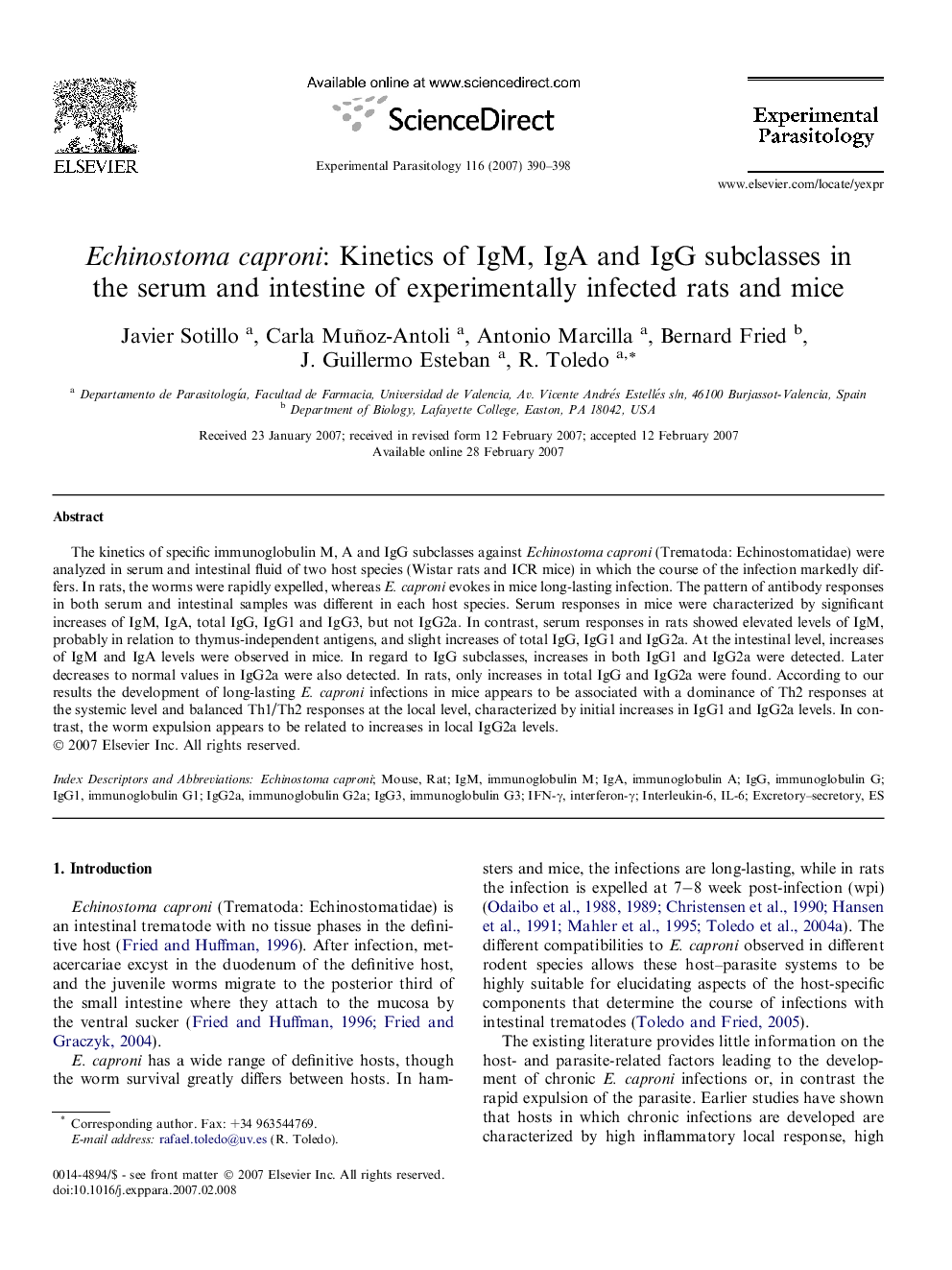| Article ID | Journal | Published Year | Pages | File Type |
|---|---|---|---|---|
| 6292398 | Experimental Parasitology | 2007 | 9 Pages |
Abstract
The kinetics of specific immunoglobulin M, A and IgG subclasses against Echinostoma caproni (Trematoda: Echinostomatidae) were analyzed in serum and intestinal fluid of two host species (Wistar rats and ICR mice) in which the course of the infection markedly differs. In rats, the worms were rapidly expelled, whereas E. caproni evokes in mice long-lasting infection. The pattern of antibody responses in both serum and intestinal samples was different in each host species. Serum responses in mice were characterized by significant increases of IgM, IgA, total IgG, IgG1 and IgG3, but not IgG2a. In contrast, serum responses in rats showed elevated levels of IgM, probably in relation to thymus-independent antigens, and slight increases of total IgG, IgG1 and IgG2a. At the intestinal level, increases of IgM and IgA levels were observed in mice. In regard to IgG subclasses, increases in both IgG1 and IgG2a were detected. Later decreases to normal values in IgG2a were also detected. In rats, only increases in total IgG and IgG2a were found. According to our results the development of long-lasting E. caproni infections in mice appears to be associated with a dominance of Th2 responses at the systemic level and balanced Th1/Th2 responses at the local level, characterized by initial increases in IgG1 and IgG2a levels. In contrast, the worm expulsion appears to be related to increases in local IgG2a levels.
Keywords
Related Topics
Life Sciences
Immunology and Microbiology
Parasitology
Authors
Javier Sotillo, Carla Muñoz-Antoli, Antonio Marcilla, Bernard Fried, J. Guillermo Esteban, R. Toledo,
